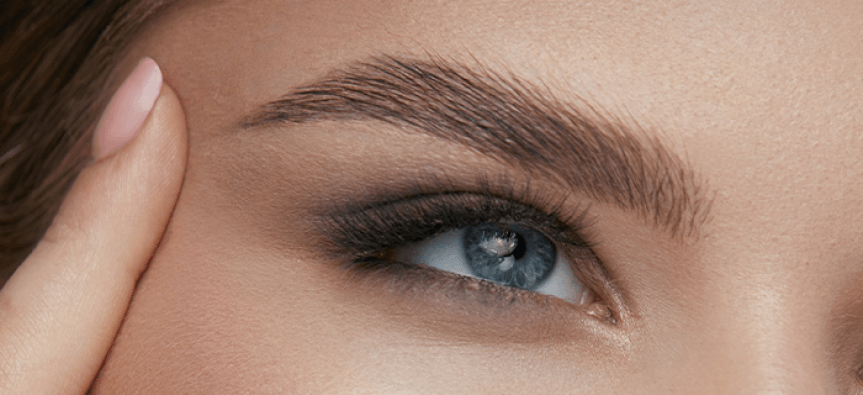Endoscopic Forehead Lift Eyebrow Lift

Endoscopic Forehead Lift Eyebrow Lift
The relentless passage of time combined with gravity inevitably creates forehead and eyebrow drooping and malposition. The aesthetic facial unit comprising the eyelid-orbital region, when flawed by gradual aging, asymetry, or familial abnormaliti, cannot always may compound the problem of redundant upper eyelid skin by crowding the eye and producing an abnornal appearance of both fatigue and premature aging. A temporal quadrant visual defict may develop, furter justifiying interventional surgery to restore lost function. If upper lid blepharoplasty alone i used in attempts as correction, the eyebrow is often drawn nearer the lid margin and adequate delineation of the infrabrowcleft obliterated by sacrificing excessive upper lid skin in a misguided attempt to correct this problem. Incorpatating one of the brow elevation procedures to enhance the resultsant appearance is a perfered approachthat preserves sufficient upper lid skin to achieve a pleasant sweeping delineation of teh upper lid cleft.
Blepharoplasty alone is less effective in improving and recoutouring the leateral orbital rhytids (“crow’s-feet” or “laugh lines”), which contribute to the aging appearance and thereby displease patients. Oblique and vertical glabellar frown lines remain unchanged without direct surgucal interruption of the involeved animation muscles. Some form of adjunctive “lifting” proceure in the uppper third of the face is thereby required to augment the improvement archieve by blepharoplasty. Most useful among these are the brow-lift (browplasty), temporal (temple) lift, the midforehead lift and the forehead (coronal pretrichal) lift. Specific indications exist for each and will be explored later.
Careful patient selection to ensure effective, satisfactory outcomes assumes major importance in all form of aesthetic surgery, especially important in orbital region rejuvenation. Patiens regularly request eyelid surgery when instead or in addition to eyelid surgery they need forehead-, brow-, and temple-lifting. Educating patients about the most effective procedure(s) often requieres superior communication skills and gentle guidance, since few patients are aware that forehead/brow ptosis is responsible for the aging oribtal changes apparent. Clearly more of the surgeons’s time must be expended to realize the laudable goals of effective patient understanding and truly informed consent.
Patient selection, particularly from the viewpoint of motivations and expectations, assumes major importance in the caliber and effectiveness of the final outcome. In aesthetic surgery, pure technical excellence will not always result in a happy, satisfied patient. Useful guidelines to patient selection (and rejection) exist; each individual, however, requires careful and sensitive screening to identify proper candidates.
Although different regions of the face age at different rates, influenced primarily by genetic factors, the upper facial third possesses its own unique fashion of aging. As elasticity progressively declines, the forehead, temple, and glabellar skin descends. Ptotic low-positioned brows develop, crowd the orbital region, and increase the degree of skin redundancy in the upper lid area. Fine lines, the result of gravity and repeated orbicularis muscle contraction, appear at the lateral canthus and temple. Progressively deep horizontal creases appear in the forehead, the consequence of repetitive frontalis muscle contraction and hy-pertonicity (their absence in a paralyzed forehead validates this observation). Synergistic actions of the corrugator and procerus muscles produce vertical, oblique, and horizontal creases in the glabella and nasal root.
Forehead-lifting procedures may be effectively combined with methods to rejuvenate the middle and lower facial thirds (facelift and necklift). Since the various regions of the face may age at different rates, forehead/brow-lifting is also commonly accomplished as an isolated procedure or as a preliminary step to blepharoplasty.
With rare exceptions, the brow elevation procedure should be carried out prior to upper lid blepharoplasty, thereby facilitating judgment as to the precise amount of upper lid skin excised and thus preventing an over-aggressive elevation of the brow-upper lid complex with consequent difficulty in normal upper lid closure.
Three factors bearing heavily on the surgeon’s choice of sequence and combinations of operations are (1) the relative position of the brows, (2) the mobility of the scalp and forehead layers, and (3) the sex of the patient. The male brow classically is heavier in hair content, occupies a more inferior (caudal) position, and is less laterally arched than the female brow, which commonly occupies a transversely horizontal position. This effect, although occasionally objectionable in a female, is not usually displeasing in a male. In contrast, the preferred female brow (many variations obviously exist) arches higher laterally than medially, ideally assuming its highest point at about the junction of the middle and outer thirds. The female brow typically thins as it courses laterally, and this diminishes the ease of potential scar camouflage in the hair-skin junction. Therefore a critical evaluation prior to technique selection is assessment of the eyebrow position, attitude, and shape with the patient sitting and in repose. By manually elevating the brow and forehead with the patient gazing straight ahead, a tentative judgment can be made about the favorable effect of brow elevation on the aesthetic unit of the eye and orbit. Individuals with ptotic brows commonly attempt to unconsciously elevate the brow and cause excessive forehead animation. This facial posture is ordinarily an unconscious habit and gives rise to a “surprised” facial expression as the drooping brow is temporarily elevated. Preoperative estimates of the benefits of surgical brow elevation will be much more accurate if all animation is consciously eliminated and the brow position is judged with the patient in complete facial repose. By having the patient close the eyes and open them slowly after allowing the facial muscles to relax, the true brow position in repose may be determined. The individual anatomic situation will then dictate the choice of which of the brow elevation procedures would most favorably complement the planned blepharoplasty operation.